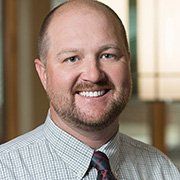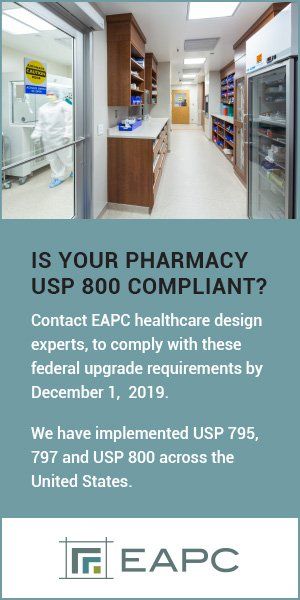Interview
Independence is not a business strategy
Matt Brandt, CEO of Hudson Physicians
At a time when primary care is increasingly consolidated, it seems like Hudson Physicians is becoming increasingly independent. What can you share about the dynamics involved with this process?
There are a couple things that have shaped Hudson Physicians business strategy. The first is St. Croix County is the fastest growing and highest average per capita income county in Wisconsin. The working family demographics of the area lend themselves well to a multispecialty primary care group. The second is the continued expansion of outpatient services. This creates opportunities to develop ancillary business lines such as home sleep studies, imaging centers, surgery centers, infusion centers, hearing aid dispensing, etc. The last item is the changing of the hospital from a community hospital to a large integrated system hospital. HealthPartners purchased the hospital from the local municipalities and over the course of time has switched to a more hub and spoke model with Regions (St. Paul) and Lakeview (Stillwater) being the hub and Hudson more as a spoke. This strategy diverges from Hudson Physicians strategy with our desire to grow and offer more local services and specialties.
After your experiences leading Multicare Associates, a large independent primary care practice which became part of a larger system, what strategies could other practices consider to ensure young independent-minded physicians will retain this practice option?
An experienced healthcare leader once told me, “A desire for a physician group to be independent is not a business strategy.” My experience has taught me this is a true statement and if physicians desire to remain independent they must think strategically about whether a physician owned practice is a viable business model and be flexible on how to achieve “independence.” As mentioned above Hudson Physicians has some market dynamics that create an ideal situation for a private practice, however if we were in a more rural environment with a high government payer mix and a small community hospital it would make more business sense to partner with the hospital in some way. The good news is there are many different models and methods available to create partnerships and maintain some level of independence. There are also different partners available beyond just the hospital, it could be independent practice associations, insurance carriers, or private equity, etc.
There are many different models and methods available to create partnerships.
How do you incorporate behavioral and mental health care into the services you provide and how has this been helpful to your patients?
Behavioral and mental health care is a large part of what primary care does and I think we are good at meeting those first level needs such as treating ADHD and depression however where the barrier exists is those more complex patients when the primary care physician needs to work with an expert to help with diagnosis and treatment. Over the years we have tried imbedding mental health providers in the clinic, creating a “hotline” for doctors to connect on complex patients, and numerous other programs. All have had limited success due patient demand far outpacing a supply of providers and no matter the model we end up rationing the care we can provide via triaging, long waits, or quick fix treatment.
The unprecedented challenges of COVID-19 are now echoed by the Omicron What are some of things you have found to be successful in dealing with the pandemic?
Be there for the patients. During the pandemic many healthcare providers constricted the hours, sites, and services they offered or put more barriers in place before patients can be seen. I understand why some of these things were done early in the pandemic but many groups where slow to adjust back to patient demand. In my mind one of the best things a practice can do is be there for the patients when and where they need care. If you are not available patients will find others who are.
Hudson is one the fastest growing areas in our region. What challenges does this pose as you look ahead to meeting the increasing needs for care?
Yes a practice in a growing market is a good thing but that is only if you can keep up with it. As mentioned above if we can’t continue to hire additional physicians, staff etc., then patients will find someone else to meet their care needs. This creates an opportunity for competitors to enter the market.
You’ve begun construction on a new facility. What can you tell us about how this project got started and what it will entail?
Hudson Physicians started doing some strategic planning in 2019 to project the number of doctors needed to care for the Hudson area if it continues to grow at its current pace. First we determined our minimum space needs for the next 15 years. Then we started to explore possible options, including expanding in our current location on the hospital campus. However, the hospital was unable to provide us with adequate expansion space and we started to explore nearby locations. We wanted to stay close to the intersection of I-94 and Carmichael Road. After exploring several locations, we decided to purchase 16 acres just northeast of the intersection. The raw land allowed us the flexibility to develop exactly what we wanted. We are currently constructing the 160,000 square foot Hudson Medical Center, which will include 77,000 square feet of clinic space for Hudson Physicians primary, specialty, and urgent care clinics. Hudson Physicians is working with specialty partners Associated Eye and Twin Cities Orthopedics who are also leasing space in the building to develop an Imaging Center, Surgery Center and Physical Therapy/Rehabilitation unit.
What kinds of new partnerships do you think will be necessary to provide the best care to your patients?
Hudson Physicians core business is primary care so partnerships with specialty clinics is what we are focusing on. We are looking for groups committed to practicing and building a practice in the Hudson area making this a hub or key market not just simply an outreach site.
What are the biggest challenges you see in the future for Allina and health care What impact has telemedicine had on how you provide care?
Telemedicine has not greatly impacted Hudson Physicians. Less than 5% of our visits are performed via telemedicine. Most patient visits involve additional diagnostics such as lab or imaging, so patient demand for telemedicine visits has not been high since patients need to visit the clinic anyway. The area telemedicine has helped is with follow up visits. Patients and physicians like the ability to schedule a follow up telemedicine visit for things like medication checks or mental health visits. In the past these were often not done or reliant solely on the patient if something was not going well to follow up.
If you could fix three things about how health care delivery works today, what would they be?
- Technology – in general healthcare IT systems are still behind the times and in many cases are creating more work i.e., we basically have transitioned to electronic paperwork. My hope is the next evolution of EMR and healthcare software is able to help with better patient engagements, allow physicians to focus more on patients, and offer all this up in real time.
- Focus spending on patient care – I am a healthcare administrator, so I understand I do not personally see patients and am I technically overhead. Commenting on this is probably a little bit ironic but the longer I work in this field the more I realize how much money is being spent managing the overly complex administrative burden of our current healthcare system that could and should be invested into direct patient care.
- Increase healthcare spend on primary care – to improve quality and lower the cost of care we must shift from an episodic sick care approach to one that is more comprehensive and preventative. The easiest way to accomplish this is to increase access to and the utilization of primary care.
Matt Brandt,
is the CEO of Hudson Physicians. Prior to this position the served as the CEO of Multicare Associates and has held other executive level positions in Twin City area practices.
MORE STORIES IN THIS ISSUE












